Do you have a question about the BIRD Thruline 43 and is the answer not in the manual?
Explains warning symbols used in the manual and on equipment.
Highlights procedures that could cause personal injury if not performed correctly.
Highlights procedures that could cause instrument damage if not performed correctly.
General safety advice for instrument usage and maintenance.
Information on manual updates and how to provide feedback.
Overview of the manual's chapter structure and content.
Describes the RF wattmeter's design, intended use, and capabilities.
Details the physical features and operational characteristics of the Bird 43.
Explains RF transmission line behavior using the travelling wave concept.
Presents mathematical formulas for forward and reflected power calculations.
Describes the circuit within the element that samples traveling waves.
Explains how to calculate power dissipated in a load, considering reflected power.
Compares standing wave and travelling wave methods for power measurement.
Discusses measuring low levels of reflected power and suitable applications.
Explains using the wattmeter for continuous monitoring of transmitter output.
Details how the Bird 43 can be used for testing various electronic components.
Provides steps for measuring signal attenuation in transmission lines.
Describes the frequency response characteristics of the plug-in elements.
Covers using the wattmeter with non-50 ohm lines and handling impedance mismatches.
Instructions for connecting the Bird 43 to coaxial transmission lines.
Step-by-step guide for replacing the unit's RF connectors.
Procedures for setting up the wattmeter for remote operation or panel mounting.
Step-by-step guide for performing standard power measurements.
Explains how to use the wattmeter for tuning loads and matching impedances.
Provides a table of common problems, causes, and corrective actions.
Instructions for cleaning key surfaces of the wattmeter for optimal performance.
Details how to adjust the DC contact for proper element seating.
Guide on setting the meter pointer to zero when no RF power is applied.
Recommendations for storing the wattmeter to protect it from dust and damage.
Contact information and procedures for returning units for service or repair.
Details the peak power measurement capabilities and operation of the 43P.
Highlights physical differences of the 4301 model compared to the 43.
Details physical differences and capabilities of the 4305A model.
Explains the RF sampling probe feature of the 4431 model.
Covers panel-mounted models for rack installation.
Lists parts and features specific to 4526 and 4527 models.
Specifies the standard impedance of the transmission lines used.
Lists the maximum allowable VSWR for different models.
Details the types of connectors used for primary line and RF sampling.
Outlines the power and frequency capabilities based on the element used.
Specifies the RF coupling ranges for different models.
Provides insertion loss values for the 4431 model.
States the accuracy specifications for CW and peak power measurements.
Lists the physical dimensions for various Bird wattmeter models.
Specifies the nominal weight for different wattmeter models.
Indicates the acceptable operating positions for the wattmeter.
Describes the standard exterior finish of the wattmeter.
Explains warning symbols used in the manual and on equipment.
Highlights procedures that could cause personal injury if not performed correctly.
Highlights procedures that could cause instrument damage if not performed correctly.
General safety advice for instrument usage and maintenance.
Information on manual updates and how to provide feedback.
Overview of the manual's chapter structure and content.
Describes the RF wattmeter's design, intended use, and capabilities.
Details the physical features and operational characteristics of the Bird 43.
Explains RF transmission line behavior using the travelling wave concept.
Presents mathematical formulas for forward and reflected power calculations.
Describes the circuit within the element that samples traveling waves.
Explains how to calculate power dissipated in a load, considering reflected power.
Compares standing wave and travelling wave methods for power measurement.
Discusses measuring low levels of reflected power and suitable applications.
Explains using the wattmeter for continuous monitoring of transmitter output.
Details how the Bird 43 can be used for testing various electronic components.
Provides steps for measuring signal attenuation in transmission lines.
Describes the frequency response characteristics of the plug-in elements.
Covers using the wattmeter with non-50 ohm lines and handling impedance mismatches.
Instructions for connecting the Bird 43 to coaxial transmission lines.
Step-by-step guide for replacing the unit's RF connectors.
Procedures for setting up the wattmeter for remote operation or panel mounting.
Step-by-step guide for performing standard power measurements.
Explains how to use the wattmeter for tuning loads and matching impedances.
Provides a table of common problems, causes, and corrective actions.
Instructions for cleaning key surfaces of the wattmeter for optimal performance.
Details how to adjust the DC contact for proper element seating.
Guide on setting the meter pointer to zero when no RF power is applied.
Recommendations for storing the wattmeter to protect it from dust and damage.
Contact information and procedures for returning units for service or repair.
Details the peak power measurement capabilities and operation of the 43P.
Highlights physical differences of the 4301 model compared to the 43.
Details physical differences and capabilities of the 4305A model.
Explains the RF sampling probe feature of the 4431 model.
Covers panel-mounted models for rack installation.
Lists parts and features specific to 4526 and 4527 models.
Specifies the standard impedance of the transmission lines used.
Lists the maximum allowable VSWR for different models.
Details the types of connectors used for primary line and RF sampling.
Outlines the power and frequency capabilities based on the element used.
Specifies the RF coupling ranges for different models.
Provides insertion loss values for the 4431 model.
States the accuracy specifications for CW and peak power measurements.
Lists the physical dimensions for various Bird wattmeter models.
Specifies the nominal weight for different wattmeter models.
Indicates the acceptable operating positions for the wattmeter.
Describes the standard exterior finish of the wattmeter.
| Brand | BIRD |
|---|---|
| Model | Thruline 43 |
| Category | Measuring Instruments |
| Language | English |
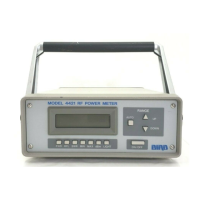
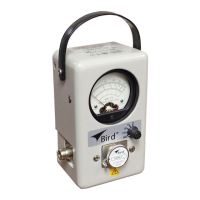
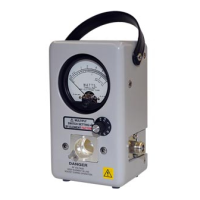
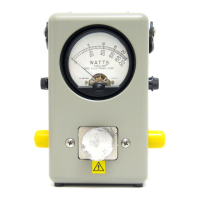
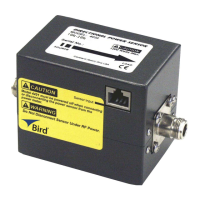
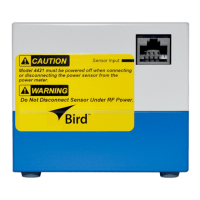
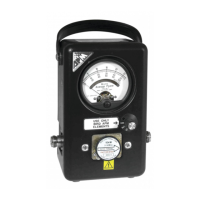
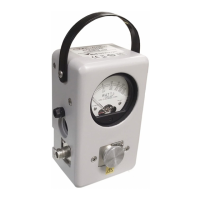
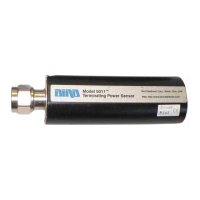
